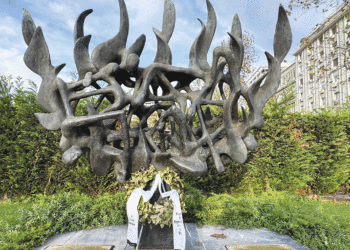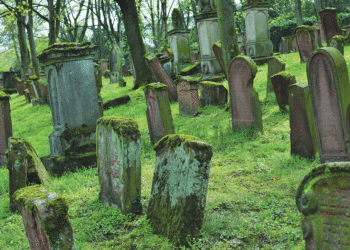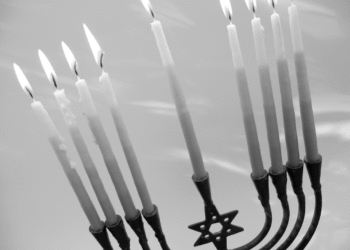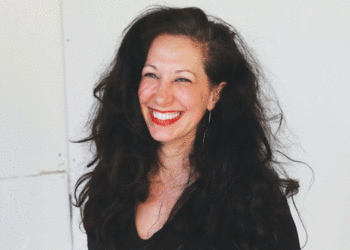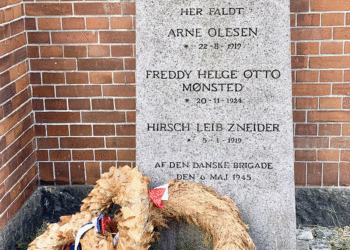By ZACHARY KAGAN
In January, Catholics across Europe take time to reflect on Christian-Jewish relations. The Italian Catholic church was the first to designate a so-called “Day of Judaism,” on Jan. 12, 1990, and since then several countries have adopted similar programs. The goal is to promote dialogue and understanding between the two religions.
This includes Poland, one of the most devotedly Catholic countries in Europe as well as the former home of the region’s largest Jewish population. While the Jewish community is much smaller now, the relationship between Catholics and Jews remains an important issue.
I found this out firsthand when I was accepted into a study tour program called “Exploring Poland/Polin,” after the Hebrew name for Poland.
The goal of this new initiative, as organized by the Taube Center for the Renewal of Jewish Life in Poland, is somewhat unique. The Taube Center paired young American Jews of Polish origin with young Polish American Catholics. The program would expose both groups to modern life in Poland, while also encouraging the participants to learn about their shared cultural heritage.
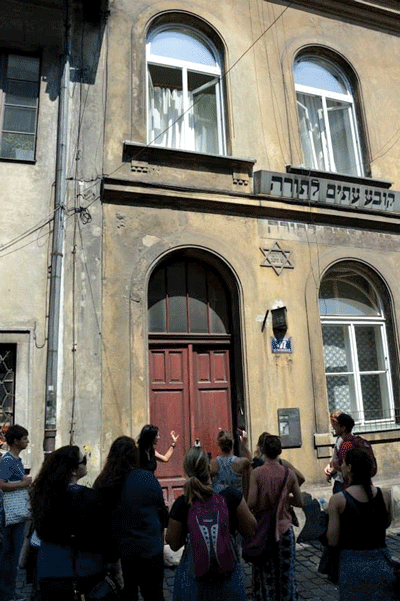
As a 10-day, organized Jewish culture tour, “Exploring Poland/Polin” draws some immediate comparisons with Taglit Birthright, but the Taube Center is trying to achieve something different. The tour is academically focused, and geared towards undergraduate and graduate students primarily interested in either Polish or Jewish studies. By bringing together these two groups, the program aims to create a dialogue that is ongoing in Poland itself.
To what extent do Polish Catholics and Jews share a common heritage? How does that heritage affect the people of Poland today? By exploring these questions, we learn to better understand our own identities and how the identities of our neighbors shape our own.
It was pouring rain on the day that we all gathered in Krakow. Dr. Agnieszka Legutko, whose many credits include directing Columbia University’s Yiddish language program, met us at our hotel. Dr. Legutko would be our mentor for the duration of the tour, along with a couple of Polish representatives from the Taube Center. From there we traveled north, following the Vistula river all the way to the Baltic Sea.
The itinerary was fast-paced and each day was packed with walking tours, museum visits, seminars and special events. By the end of the 10 days we were all thoroughly exhausted. That much the Taube Center does share with Birthright: both encourage participants to experience now, sleep later.
And, as many Jewish culture tours do, we took a day to visit Auschwitz. I don’t personally believe that visiting the Nazi camps should be an obligation for those visiting Poland, Jewish or otherwise. In a sense, it’s disheartening to learn that the country’s top tourist destination is a concentration camp. However, I appreciate the tremendous work and dedication that goes into maintaining the Auschwitz-Birkenau Memorial and Museum. Those seeking an uncompromised record of the Holocaust will find it there.
Beyond preserving the memories of the Nazi occupation, Poland openly acknowledges the episodes of anti-Semitism throughout its history. Our tour encountered one example in Sandomierz. The city’s Catholic cathedral displays a collection of paintings depicting acts of Christian martyrdom. The most controversial of these depicts a scene of blood libel: stereotypically portrayed Jews are shown cutting and draining the blood of Christian children to make matzos.
This particular painting was removed from the cathedral for several years. Then in 2006 the church decided to display it once again, this time with a placard providing historical context. Choices like this show that many in Poland are willing to confront the prejudices of the past rather than pretending that they never existed.
The Taube Center organized a forum for our group with Joanna Kozińska-Frybes, the deputy director of the Department for Consular and Polonia Affairs. During the meeting each us was invited to share a little about their connection with Poland.
University of Chicago graduate student Patricia Nowakowski described (in perfect Polish) her Polish Catholic upbringing in the United States. Despite her involvement with Polish schools and communities in Chicago, it was now — only during the Taube Center’s program — that she learned of the Jewish role in Polish culture and history. This point resonated with the Hon. Kozińska-Frybes, who remarked how it is “important for Polish Americans to recognize the Jewish past of Poland and to build links with the Jewish past of which they are not aware.”
On Friday night we missed Shabbat services when our bus returned late to Warsaw. Instead we gathered in the common room of our shared dormitory in Warsaw, and organized a small Shabbat dinner for ourselves. Dr. Legutko lit the candles, and the Jewish students in the group took turns saying the Kiddish. For some in our group, this was their first time at such a dinner.
The evening that followed was one of the highlights of the tour. We spent the night talking, laughing, and learning from each other’s traditions in a way that was both unexpected and wonderful. I sincerely hope that the Taube Center will continue and expand its educational programs, so that many other Jews and Poles will have the same fantastic opportunity to reconnect with Poland.
***
Zachary Kagan was raised in St. Paul and attended Central High School. He is a recent graduate of Columbia University in New York.










